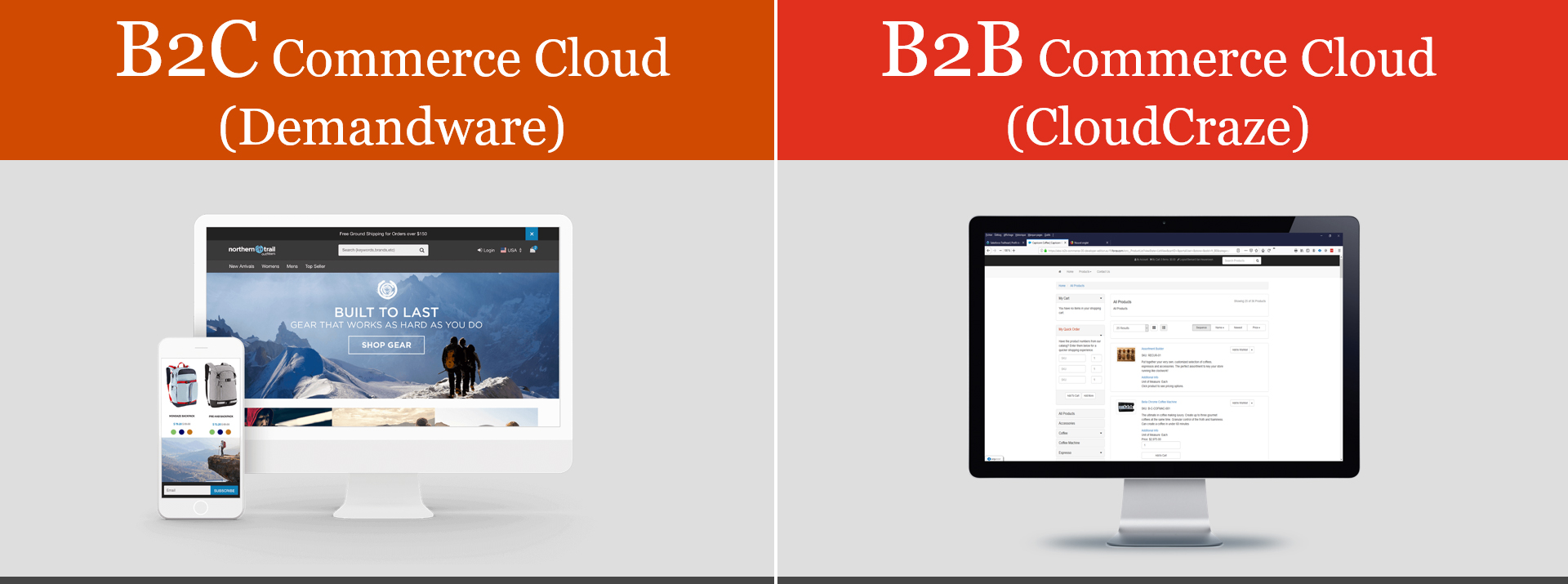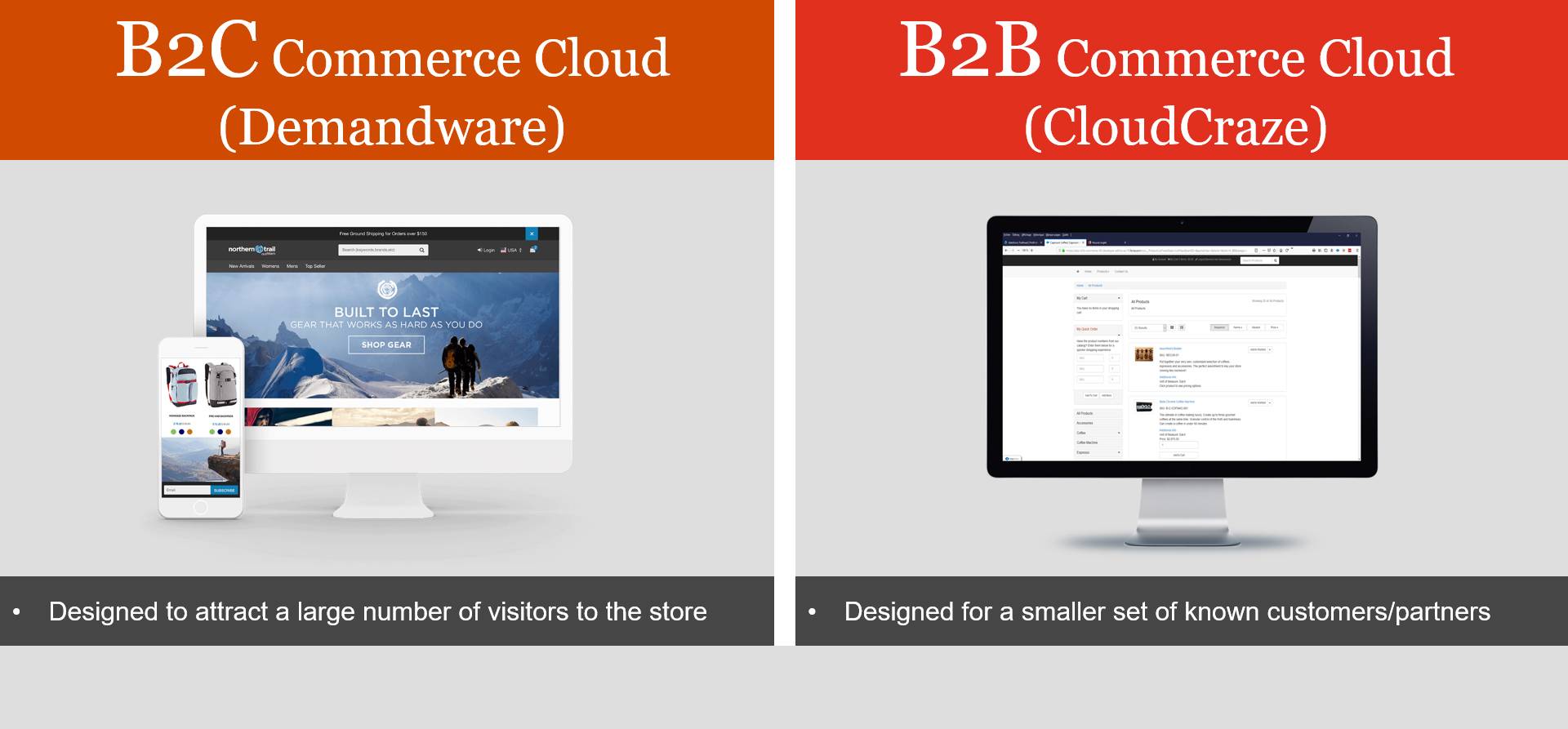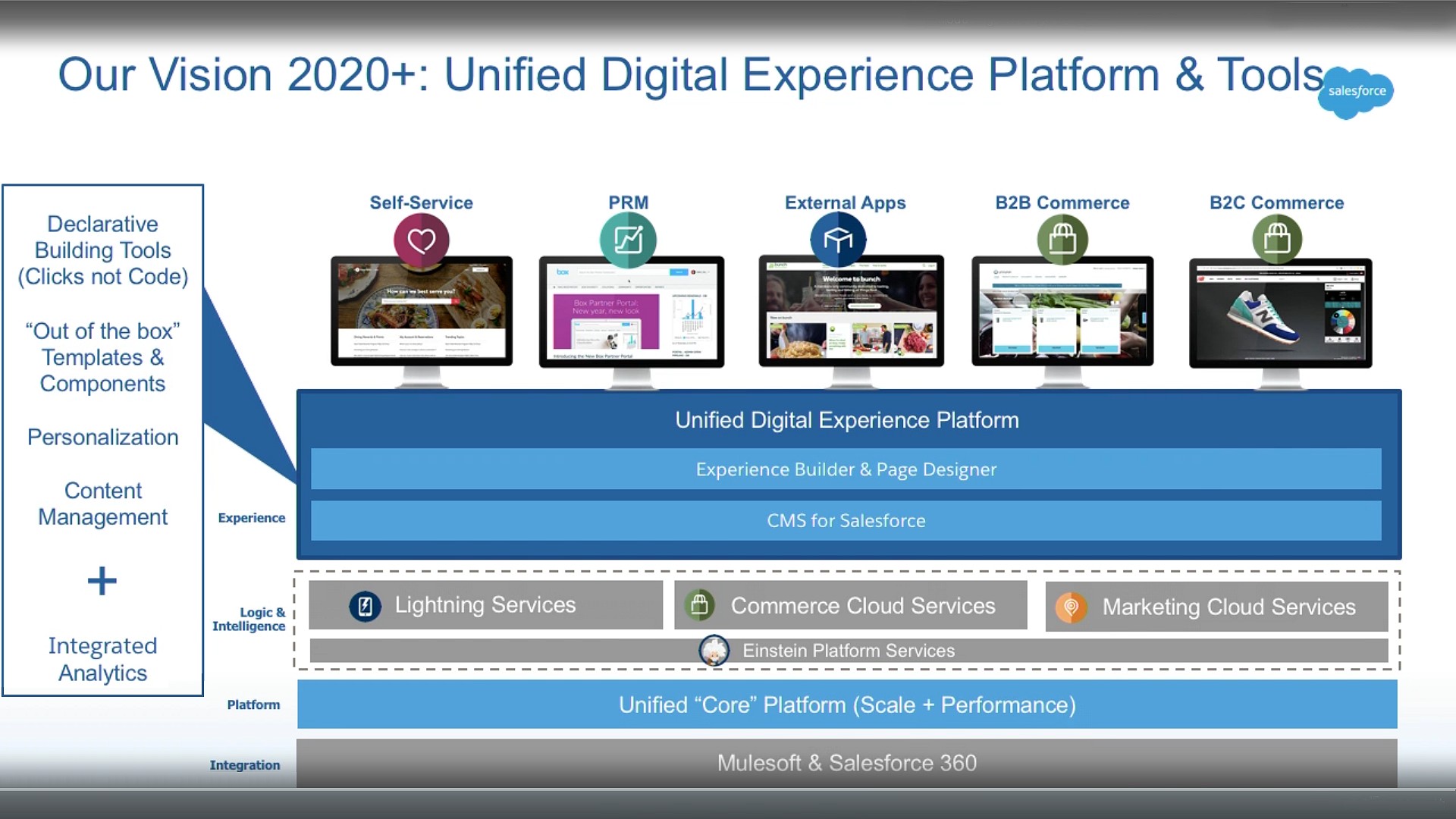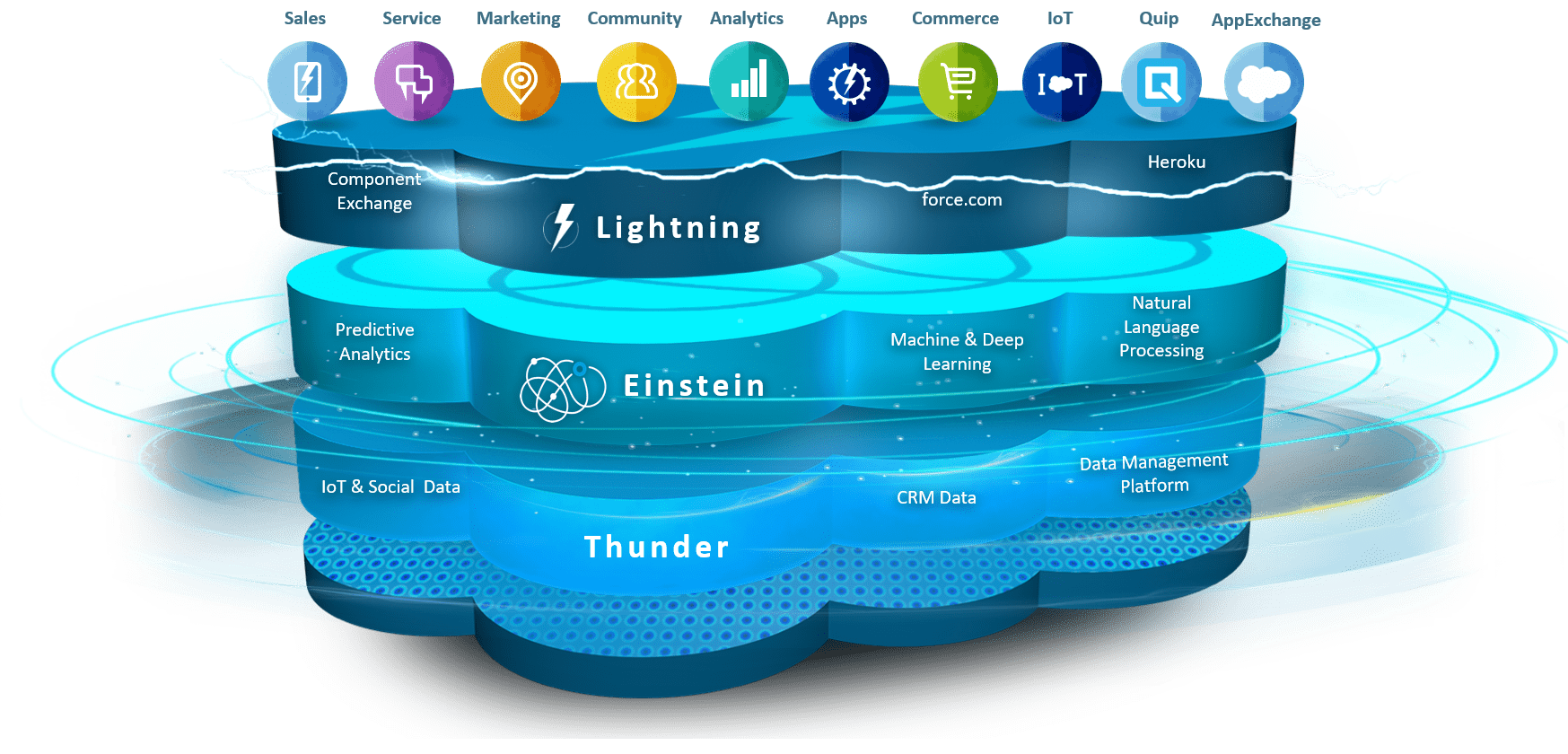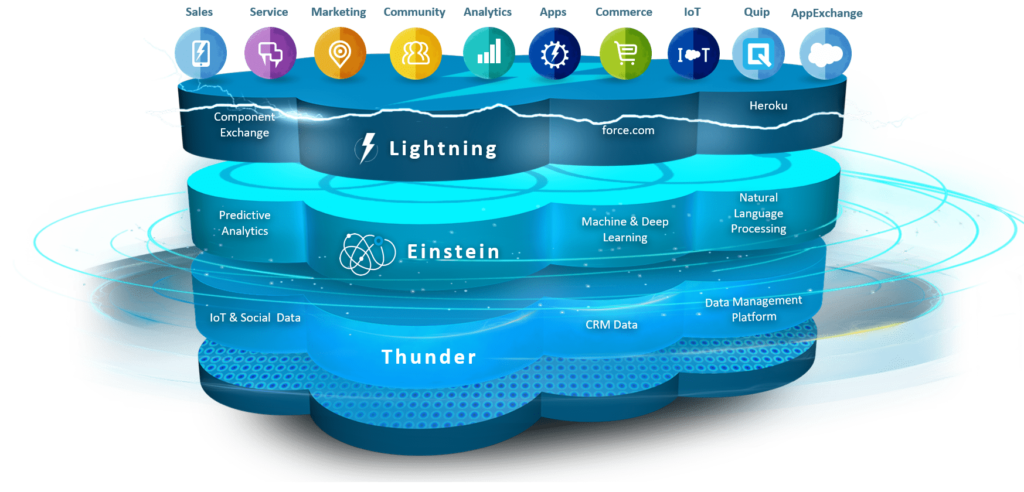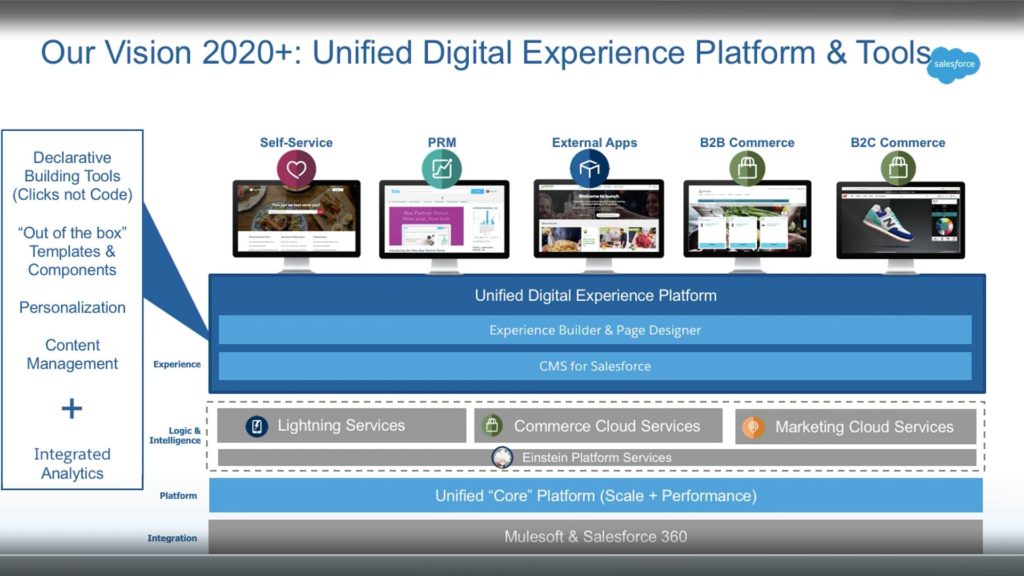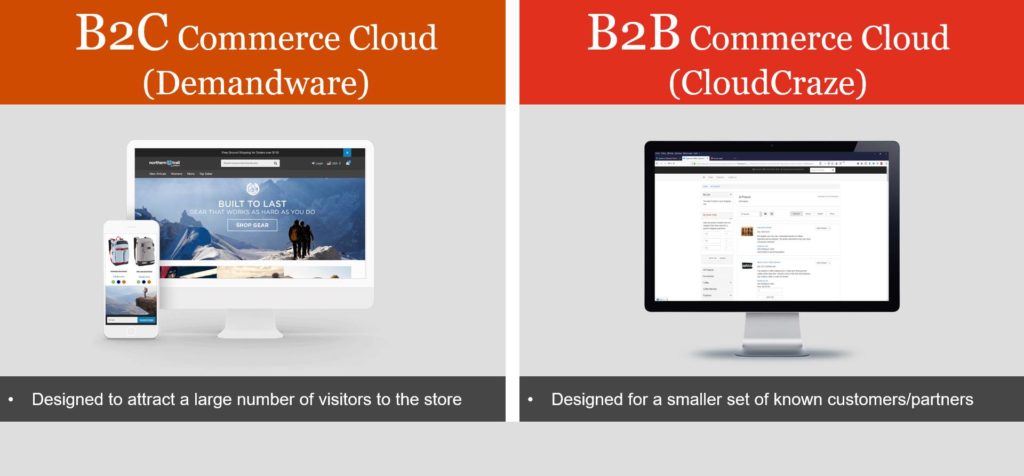Salesforce, a CRM? Yes, but not just a CRM
Salesforce: B2B Commerce Cloud – Part 1 – EN
Salesforce was founded in 1999 by a small group of people including Marc Benioff, its current CEO. What was his idea? A customer relationship management (CRM) platform as SaaS (Software as a Service), without the need to worry about things like servers, updates and backups. He wanted to offer an all-inclusive service.
For the record, Benioff had just spent 13 years at Oracle and was its youngest Vice President ever – he started at just 26 years old. It’s perhaps less well known, but he was also the initiator of the 1/1/1 philanthropic model that he applies to his business: the premise is that salesforce.com dedicates one percent of its revenue, one percent of its product and one percent of its employees’ time to the community.
Having experienced the early days of Salesforce, I must admit that in 1999 it wasn’t the easiest application to handle, nor was it the sexiest. But it had the great advantage of doing what it said on the tin: managing customer relationships, from anywhere in the world. A true revolution.
In 2014, Salesforce became the world leader in customer relationship management.
The early days
Since its inception, Salesforce has pursued an intensive policy of acquisitions. It currently has more than fifty major assets under its belt, including the most recent, Tableau, acquired for more than $15 billion.
Benioff’s second brilliant idea: all these acquisitions were to be used in the evolution of Salesforce, not only at the level of the CRM but in all areas that affect the life of medium-sized and large companies.
Below is a list of some important acquisitions by Salesforce concerning e-commerce.This list will give you a better understanding of the title of the first section of the article: Salesforce, a CRM? Yes, and then some!
- Karal + Instranet – knowledge management
- GroupSwim – chat
- Informavores – a visual process manager much appreciated by SF consultants and developers
- Activa – live chat (Service Cloud)
- EntropySoft – files connect
- SteelBrick – the famous CPQ – configure, price, quote
- MuleSoft – integration software for connecting applications, data and devices
- ExactTarget – for Salesforce’s Marketing Cloud
- Demandware – for its B2C Commerce Cloud
- CloudCraze – for its B2B Commerce Cloud
- Tableau – data visualisation
- ClickSoftware – mobile workforce management
- And various companies specialised in artificial intelligence (AI) like Einstein
Salesforce acquisition timeline
From Salesforce’s perspective, these acquisitions were not simply to add to the product catalogue, but served to enable Salesforce to improve its environment (the Lightning mobile app, for example), and add and integrate new features.
Take, for example, the acquisition of SteelBrick. Its flagship product is CPQ (configure, price, quote), which has become the benchmark add-on for companies with very complex product pricing (offers, orders, e-commerce).
Salesforce is no longer a simple CRM. It’s a global solution for companies that offers an in-depth view on prospects, customers, partners and competitors. On this base are grafted high-performance functions like marketing, e-commerce, AI, analytics, sales, support service and field service support.
Image copyright – Salesforce
In addition to acquisitions that aim to integrate new features into Salesforce, there are also acquisitions that allow you to connect to key external players:
- MuleSoft, for elegant and controlled synchronisation with applications like SAP
- Files Connect (EntropySoft) to access external databases like Sharepoint, Google Drive and Box
- CMS Connect, which lets you embed assets from a third-party CMS (WordPress, Drupal, Adobe Experience Manager) directly into your Salesforce community pages
E-commerce
Demandware and CloudCraze were originally solid and reputable solutions in B2C and B2B commerce, respectively. Integrating them into Salesforce, however, wasn’t something that could be done in a day. First there was the initial integration, after which some procedures worked, but were perhaps a little out of line with Salesforce’s standards.
Then came standardisation, the optimisation of objects and procedures. Since 2018, Salesforce has committed tremendous resources to drastically improve everything related to web access, as well as mobile applications.
As a result, web and mobile applications for both B2C and B2B Commerce Cloud are now conveniently unified on a single experience platform.
These two major acquisitions (Demandware and CloudCraze), their direct link with the core CMS and their complete integration with all the tools in the list of acquisitions above enabled B2C and B2B Commerce Cloud e-commerce solutions to revolutionise medium and large companies.
Salesforce Unified Experience Platform – Copyright Salesforce
Difference between B2C and B2B products
The diagram below gives a brief overview of the positioning of these two solutions.
In addition to the main positioning difference illustrated above, you’ll immediately notice the different look of these two solutions.
The B2C product needs to attract and capture the maximum number of potential new visitors: it must be colourful, have a ‘sexy’ design and contain a large number of compelling images, videos, and promotions.
The B2B product, on the other hand, has the primary purpose of being functional: to assist the customer/distributor in placing and managing their orders, however complex they may be. Simplicity and specific functionalities make B2B Commerce Cloud a must in this field.
In the next article (Part 2), we’ll make a more detailed comparison of these two solutions, then describe the main features of the B2B product – in my opinion, the most suitable for the types of customers.
Conclusion of Part 1
With the advent of mobile technologies and digitalisation, the customer no longer connects to an ERP to place an order, but to extended e-commerce solutions like B2C or B2B from Salesforce. As a result, there are whole segments of the ERP that no longer have a reason to exist.
As recently as 10 years ago, the CRM platform was generally integrated with the ERP. Solutions like Salesforce have become so vast that now it’s the ERP that’s integrating into the CRM.

